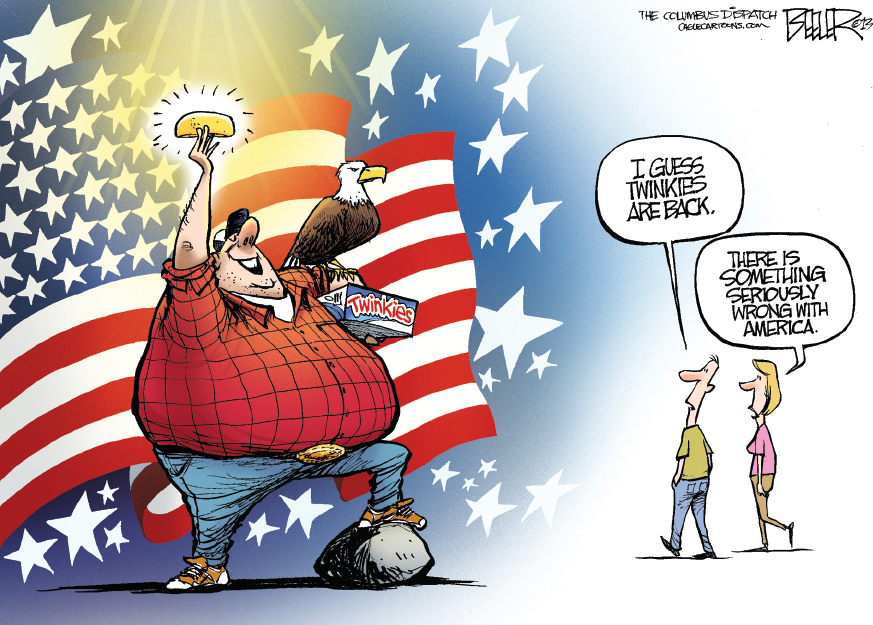DECIDING TO WRITE A RHETORICAL ANALYSIS.
DECIDING TO WRITE A RHETORICAL ANALYSIS. You react to what others say or write all the time. Sometimes an advertisement, a speech, or maybe a cultural image grabs you so hard that you want to take it apart to see how it works. Put those discoveries into words and you’ve composed a rhetorical analysis (for more on choosing a genre, see the Introduction).

“Twinkies” At first glance, this editorial cartoon by Nate Beeler of the Columbus Dispatch might seem just a riff on the return of Hostess Twinkies to the marketplace in 2013. But how exactly do the images in the panel mesh with the remark made by one of its characters: “There is something seriously wrong with America”? What exactly is going on here —rhetorically?
Nate Beeler, courtesy of Cagle Cartoons.
Rhetoric is the art of using language and media to achieve particular ends. In rhetorical analyses, you identify the specific techniques that writers, speakers, artists, or advertisers use to be persuasive and then assess their effectiveness objectively.(understand argument) You take a rhetorical analysis one step further when you cast neutrality aside and offer good reasons for endorsing or disagreeing with a particular argument — in effect making a case of your own. Such a detailed inspection of a text is sometimes called a critical analysis.
When you write a rhetorical analysis, you’ll make the following moves.
Take words and images seriously. When you compose rhetorical analyses, hold writers to high standards because their choices have consequences. Fair and effective techniques of persuasion deserve to be identified and applauded. And crooked ones should be ferreted out, exposed, and sent packing. It takes practice to distinguish one from the other — which is what rhetorical analyses provide.
Spend time with texts. You cannot evaluate the techniques of a writer, speaker, or artist until you know them inside out. But we blow through most of what we read (and see) without much thought. Serious rhetorical analysis does just the opposite: It makes texts move like bullets in The Matrix, their motion slowed and their trajectories magnified for careful study. (read closely)
Pay attention to audience. When you do a rhetorical analysis, understanding for whom a text is written can be as important as what it says. In fact, audiences determine the content, shape, and language of most arguments.
Mine texts for evidence. Find and cite any rhetorical moves that casual readers of a text are likely to miss. Point to subtle or ironic language, overblown emotional appeals, intricate logic, or covert bigotry. Moves such as these will be the best support for your claims in a rhetorical analysis. Expect to quote often. (use quotations)